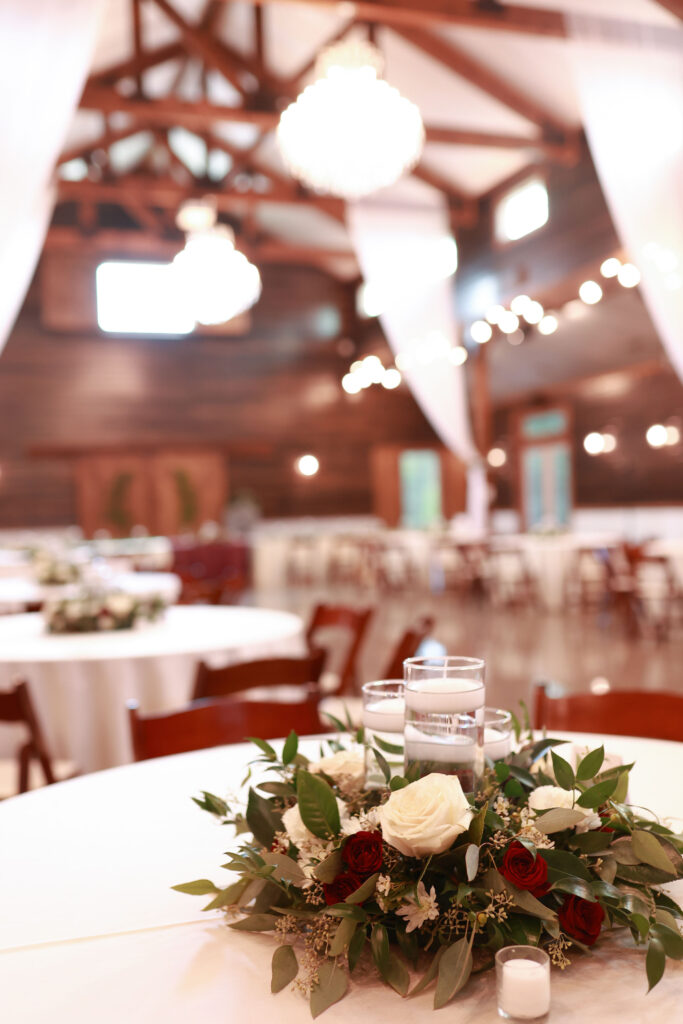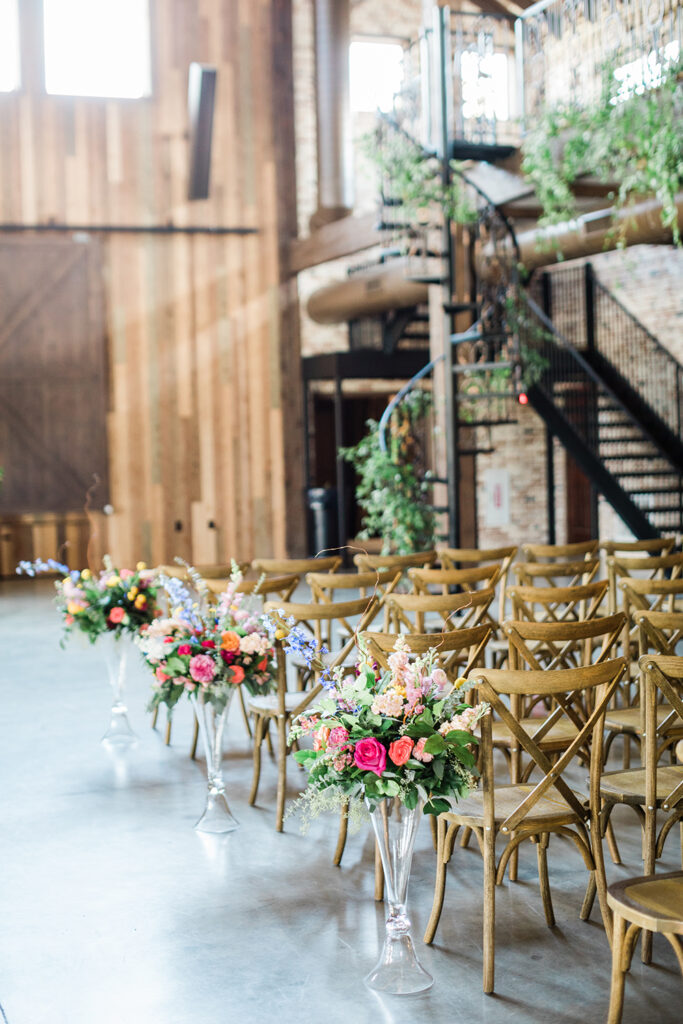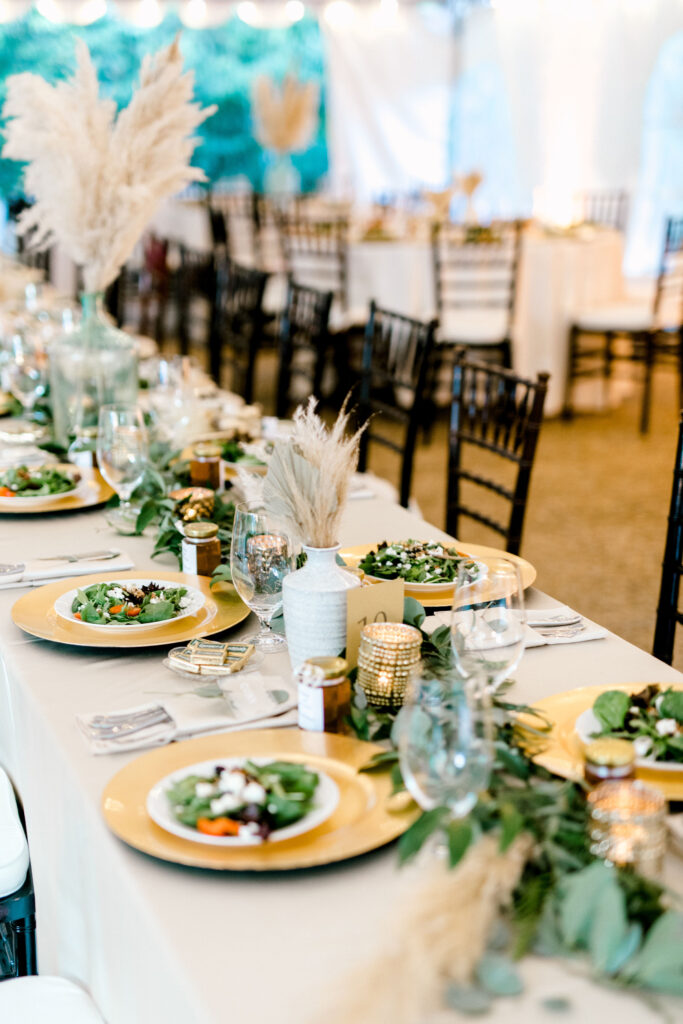[featured image: Angela Sostarich Photography]
Choosing Your Wedding Colors
If you find yourself searching “wedding color combinations” on craft websites, it will return a ton of results. But how did those combinations get created? We are here to help you choose your wedding colors and start designing a wedding that reflects you and your significant other’s style.
Wedding colors can set a romantic, playful, or party tone. They can be seasonal or classic. Recently, we are seeing more brides incorporate a texture into their color palette and wedding aesthetic. So, the options are endless. The one thing all of the wedding color combinations have in common is a base color.
Choosing your Base Color
Pick a few colors you love and ask yourself if it is seen more often in the fall or the spring. There is not a requirement to use certain colors at certain times of year, but it is natural to be drawn to brighter colors in the spring and darker colors in the fall. It will be the color you predominately use throughout your wedding, so you don’t want it to seem out of place (or do you?). Jewel tones and deep reds and browns contrast well with the dormant foliage most often found in Texas during the fall and winter. Pastels blend merrily with garden greenery and roses. Think about yourself and your bridesmaids dresses, and consider colors that will flatter various skin tones.
Once you choose your base wedding color, you can determine what accent colors you would like to use. Gold and silver are popular, but more muted tones such as tans and browns can make your colors stand out or lighten a room. Gradient accent colors, meaning colors in the same shade of your primary wedding color but lighter or darker, can also be a fun mixture to include in your wedding color palette.
Knowing your base color will help you when you start going dress shopping around this time, for both yourself and your bridesmaids.
Picking a Wedding Florist
Show, don’t tell. What does that mean and what does it have to do with picking a wedding florist? Well, floral design is an art, and while you may think it is easy to pick some wildflowers and put them in your grandmother’s vase, that’s not art. We cannot stress enough to let your wedding florist be creative. You will be so much more pleased with the result than attempting to name flowers you want to see in your bouquet. There are so. many. flowers. Don’t limit yourself or your wedding style by being too informative. Organize a pin board with similar styles and colors you want to see in your theme, and schedule your floral consultation. The florist will ask you questions regarding the style. They will ask you what you like and don’t like. Answer, then let them do their thing. Also, the internet is a useful tool and it can give you a ton of ideas. However, over-edited photos sometimes result in floral colors that simply do not exist naturally. Be open-minded to variations in colors and don’t get fixed on a certain bouquet online. You never know if it is a misrepresentation of the colors in that particular bouquet. That’s the best advice we can give you when it comes to choosing a wedding florist.
You need to complete this step after your date is set and you have chosen your venue so the florist can be prepared for the way the flowers will keep that time of year and their surroundings. The last thing you want is wilted flowers. You will also want to have your colors decided before heading into this meeting.
Choosing a DJ
Believe it or not, more than 50% of brides wish they would have more carefully chosen their DJ. Music is incredibly important to the atmosphere or mood of the event. If you want romantic and classical, you would play softer music, but if you wanted a rave/live band feel, you would want something really upbeat. A DJ that can play age appropriate music is also important. Weddings have young kids all the way to older adults in attendance. Good DJ’s will consider this during your conversations with them and play what is relevant to all of the guests at your wedding.
Don’t just price shop when choosing a DJ. DJ equipment isn’t cheap to invest in, and you want someone that has the ability to adequately switch your ceremony music and get the party started. Reviews are everything. Many DJs will have a ton of videos of a really good party, but the true value is how easy they were to work with, whether or not they played music you wanted to hear, and how long the package time lasted.
Some DJs will up-charge for lighting, travel time, second ceremony setups, and set up and breakdown, while others will include it in their package pricing. 6 hours is a good starting time to look for when considering what all you need for your wedding. You may need more or less depending on the length of your reception.





